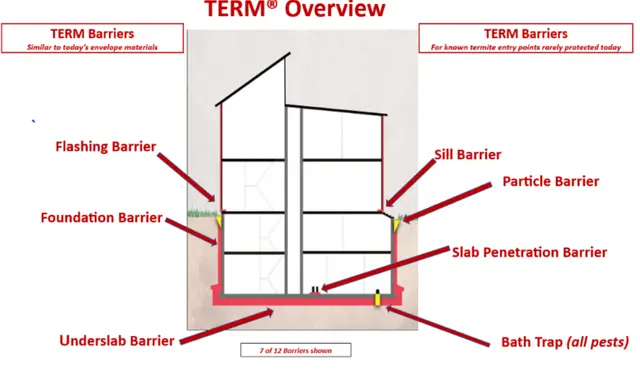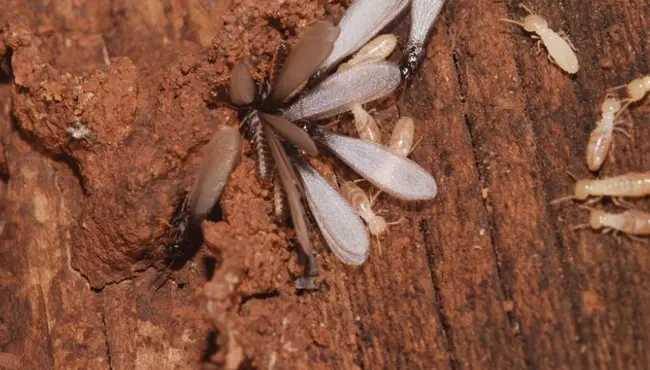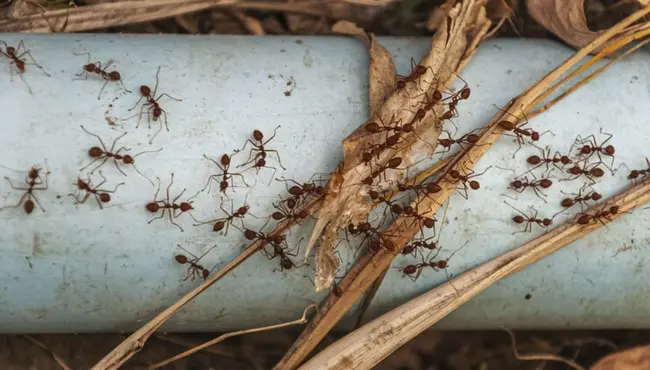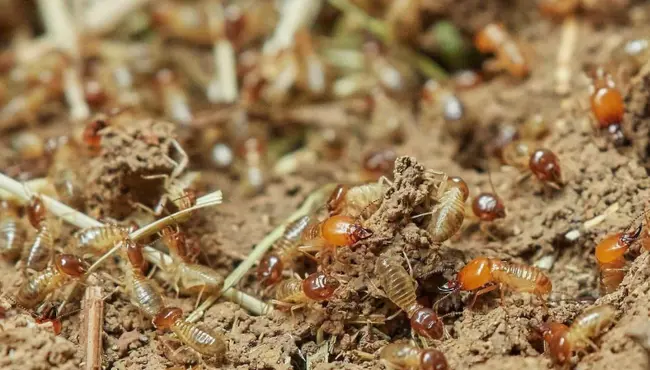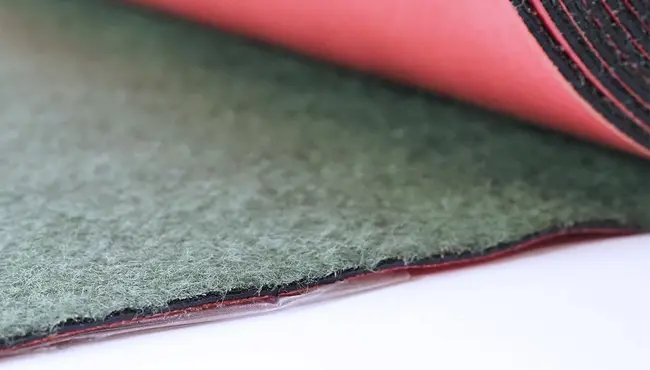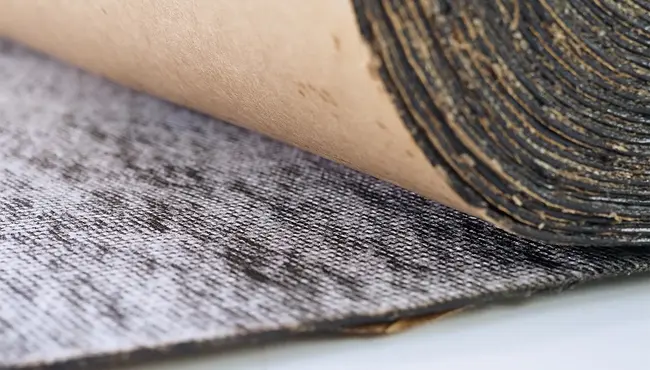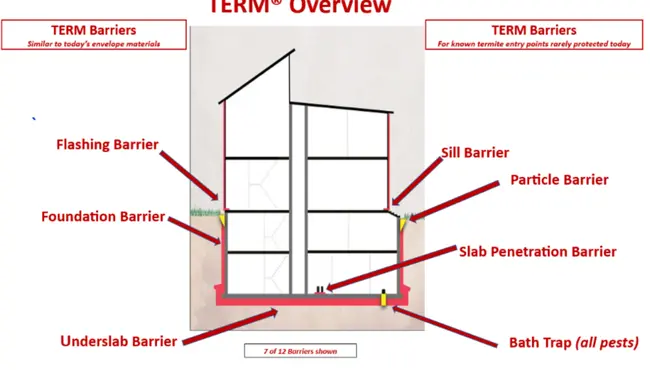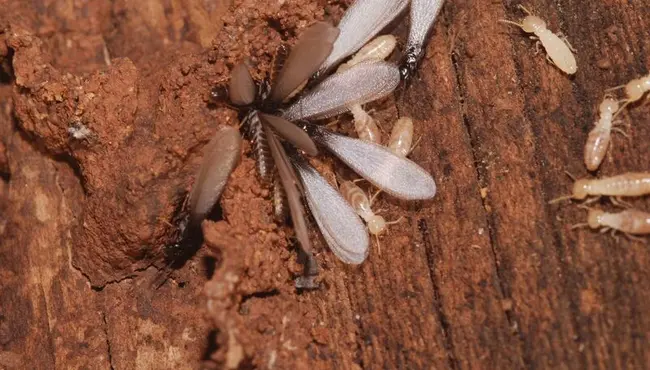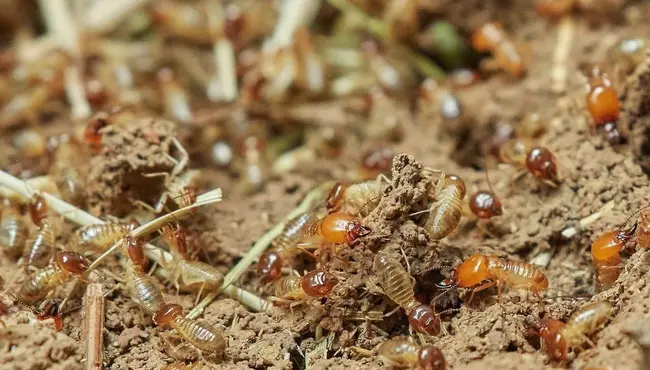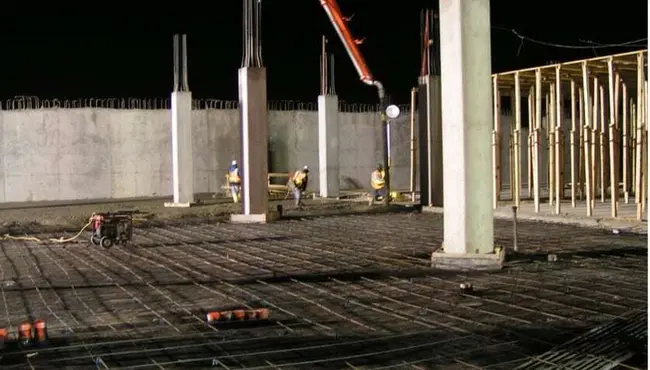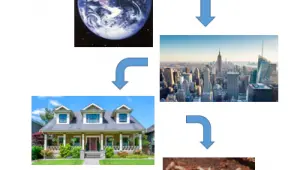Protecting a building or home against structurally damaging termites requires treatments. Termites cause $40 billion in damage globally and destroy parts of more than 600,000 houses in the U.S. annually, making termite treatments mandatory. But how long does a termite barrier last? The length of protection depends on the type of treatment. Common types of termite treatments include bait, liquid, tenting, heat, and physical barriers.
How Long Does a Termite Barrier Last?
- Bait: Bait termite treatment lasts several months and requires monthly or quarterly monitoring to ensure the bait is still in place and attracting termites.
- Liquid: Liquid termite treatment lasts five to twelve years.
- Tenting: Tenting termite treatment lasts five years under the right conditions.
- Heat-based: Heat-based termite treatments offer no ongoing protection.
- Permanent physical termite barriers: Permanent physical barriers like those offered by Polyguard Products provide a long-lasting, non-pesticide, waterproofing/termite barrier that significantly lessens the need for pesticides during the structure's lifetime.
How Long Does Bait Termite Treatment Last?
Bait termite treatments consist of cellulose and slow-acting insecticides placed near foraging termites in or around a structure. After the termites ingest the poisonous bait, they return it to their nest, and infect the other termites. The insecticide disrupts the termite's normal growth process, which causes them to die when they molt. However, it can take months for termites to come across the bait stations, so it may take weeks to eliminate the colony.
Termite bait stations can last several months, and can require quarterly or monthly inspection, monitoring, and rebaiting by a pest control specialist to ensure the bait's placement will still attract termites. Several factors can affect their effectiveness and longevity:
- Ingredients: The active ingredient determines the effectiveness of bait stations.
- Location: The placement of the bait station affects its effectiveness.
- Termite activity: The more intense the termite activity, the more often you will need to check and replenish the bait station.
- Environment: The weather and other environmental factors may impact the bait station's longevity, particularly for in-ground models.
How Long Does a Liquid Termite Treatment Last?
Professional pest specialists apply this insecticide directly to the soil under or around the structure's foundation, pre and post-construction, to create a chemical barrier around the perimeter of a building or home. The chemical barrier repels or exterminates subterranean termite colonies and helps deter future infestations.
Liquid termite treatments can last from five to twelve years. However, the liquid termite treatment’s effectiveness can depend on several factors:
- Ingredients: Premium and more costly termiticides offer the longest protection.
- Application: Improper application, insufficient quantity, and gaps in the barrier can reduce the treatment's effectiveness and longevity.
- Soil type: Some soil types absorb termiticide more rapidly; therefore, they require more frequent treatments.
- Environment: Landscaping, rain, and other environmental factors can diminish the effectiveness of liquid treatments.
- Termite activity: Areas with high termite activity will deplete the barrier's effectiveness and, therefore, require more frequent treatments.
How Long Does Tenting Termite Treatment Last?
A tenting termite treatment (fumigation) requires evacuating, enclosing, and sealing the entire structure with tents or tarps, to create a space for the exterminator to fill with a gas that damages the termites' respiratory and nervous systems. Effective fumigation takes 24 to 72 hours, including preparation and post-treatment aeration. Fumigation permeates every nook and cranny of a structure, which makes it ideal for Drywood and Formosan termite infestations.
The effectiveness of a fumigation can last five years under the right conditions. However, you must combine it with other treatments to stop future infestations. The effectiveness of fumigation can depend on several factors:
- Prevention: You must pair fumigation with preventive treatment, like bait stations, in order to prevent a new infestation.
- Species: It is more difficult to stop Drywood termite infestations than subterranean termites.
- Application: The duration, fumigant concentration, and seal quality determine the treatment's effectiveness.
- Environment: Areas more prone to termite activity require more frequent treatments.
How Long Does Heat Termite Treatment Last?
Heat-based, non-chemical termite treatments (thermal remediation) eradicate termites and their eggs by exposing them to temperatures of 120 to 150℉ (40 to 65℃) for about 35 minutes. Most termite heat treatments take about eight hours, but the exact duration depends on the size of the structure, the building materials involved, and the severity of the infestation.
Heat remediation can eliminate an existing infestation, but provides no ongoing protection unless paired with other treatments. Several factors can impact the termite heat treatment's effectiveness:
- Materials: Some building materials are more difficult to heat than others, which can complicate efforts to superheat your entire home and can render the treatment less effective.
- Insulation: A well-insulated structure will retain heat more effectively, while poorly insulated areas may not achieve the temperature required to exterminate.
- Prevention: Heat treatments require adequate preventive measures post-treatment to prevent the establishment of new termite colonies.
- Species: It is more difficult to exterminate subterranean termites since some colony members may live outside the structure.
Long-Lasting Protection with Polyguard TRM Non-Pesticide Physical Termite Barriers
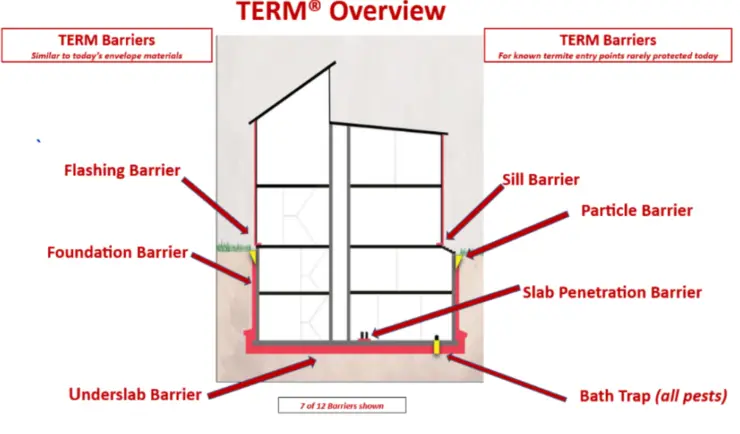
Polyguard Products specializes in sustainable pesticide-less physical pest barriers that offers Termites, Energy, and Moisture prevention in a single building envelope solution. Our sustainable, long-lasting, effective system significantly lessens the need for pesticides during the building's or home's lifetime, when properly installed and maintained.
Polyguard offers TRM Barriers for protecting specific parts of a house:
Underslab TRM is the base component of the TRM Barrier System for blocking termites and water at the slab joints and cracks.
TRM Sealant protects against termites and water at the TERM® membrane barrier overlaps, gaps, and penetrations.
TRM Bath Trap blocks termites, fire ants, rats, mice, snakes, and moles from entering through bath traps in a concrete slab.
650 TRM seals foundation joints and cracks to prevent water and termite intrusion.
TRM Sill stops termites from accessing wood framing through joints in the floor or concrete cracks - significant access points for subterranean termites.
TRM Flashing or TRM UV2-40 are applied at the intersection of the horizontal concrete slab and exterior sheathing. Most sheathings resist termite penetration, but their seams are vulnerable. You can also use TRM Flashing or TRM UV2-40 to seal sheathing seams and the gaps around door and window openings.
TRM Isolation Joint seals isolation joints (cold joints) in the gaps where patios, sidewalks, and driveways connect with the house, spaces where termites and other pests can infiltrate.
TRM Particle Barrier protects several points on the structure from termite entry, including the exposed concrete perimeter and bath traps.
Polyguard TRM Non-Pesticide Physical Termite Barriers
Polyguard TRM Non-Pesticide Physical Termite Barriers provide a long-lasting, superior solution to blocking termites in one building envelope, compared to other methods of termite barriers that only offer temporary solutions like bait, liquid, tenting, and heat. Permanently stopping termites from accessing your building or house will protect its value and save thousands of dollars in repair.
Don't hesitate to contact the Polyguard® professionals today for more information on how long a termite barrier lasts.
